The Kublr Demo/Installer must be installed. If you haven’t done that yet, please refer to the Installation Guide for the Kublr Demo/Installer.
System requirements for the cluster nodes:
Steps below describe how to use Kublr to create VMware vSphere Kubernetes cluster. The following steps are described:
Kublr can use two kinds of VM templates:
For a quick start, you can prepare VM template with installed cloud-init:
To add a new cluster:
On the left menu, click Clusters.
Click Add Cluster.
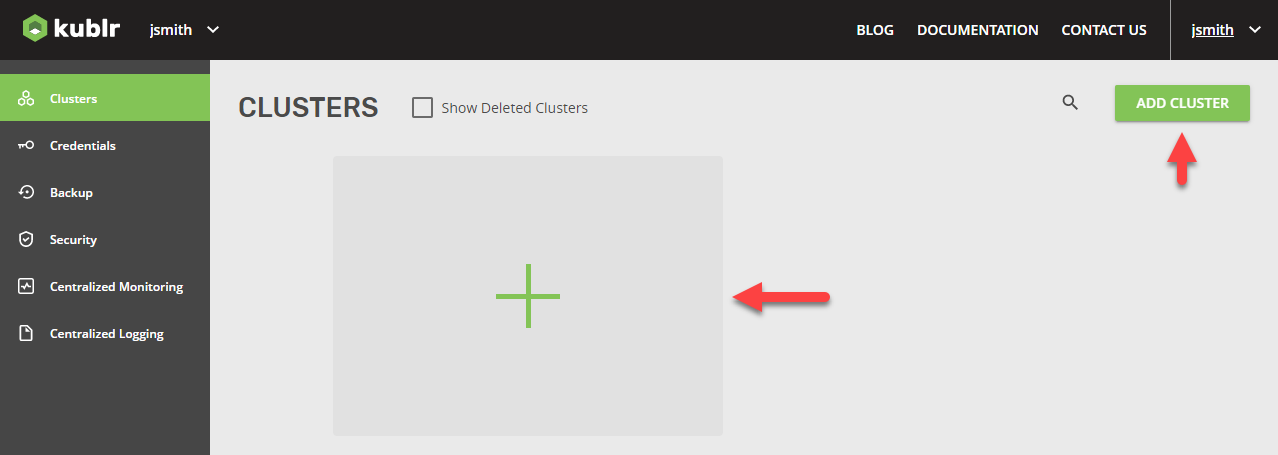 The Select Installation Type dialog is displayed.
The Select Installation Type dialog is displayed.
In the Select Installation Type dialog, select Platform or Cluster.
Click Continue Setup.
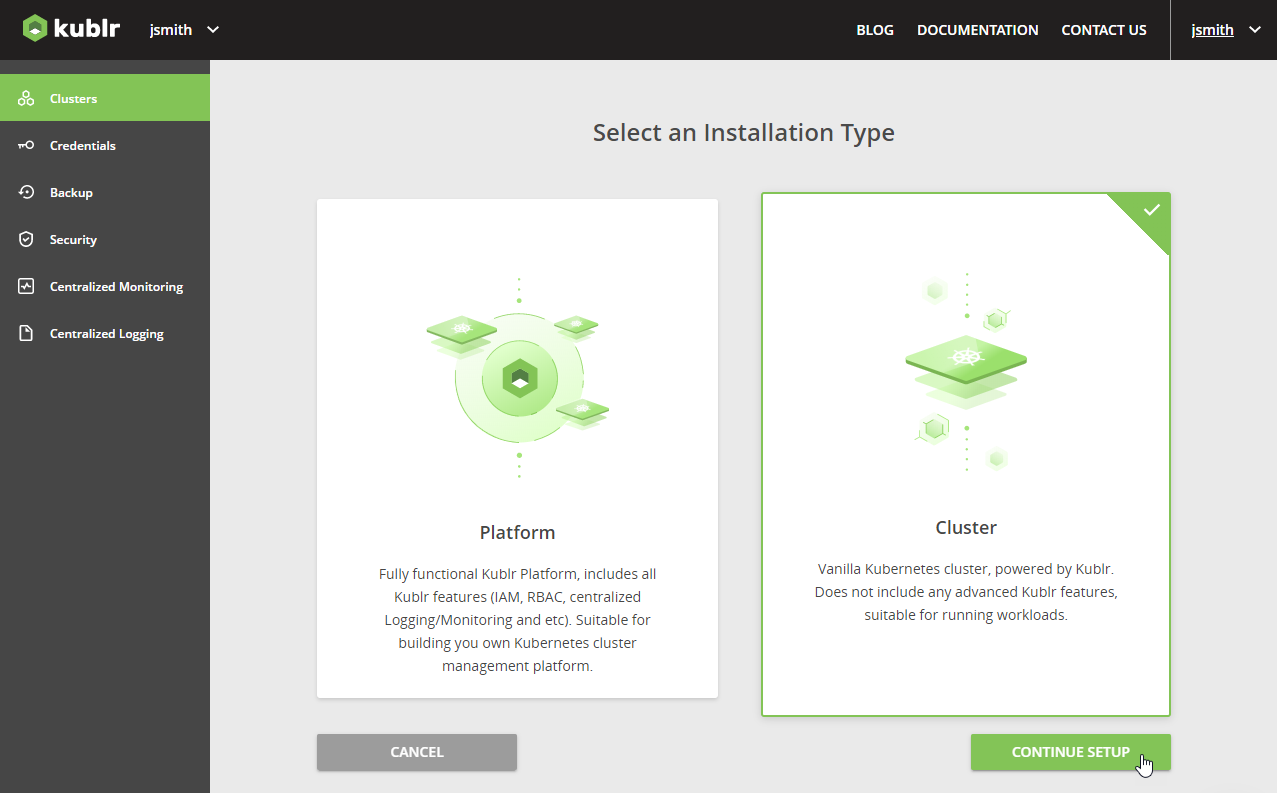 The add cluster/platform dialog is displayed.
The add cluster/platform dialog is displayed.
Set Provider to “VMware vSphere”.
From the Credentials list, select previously created VMware vSphere credentials.
If credentials were not created previously, use Add New Credentials.
Specify Cluster Name.
Set in order listed:
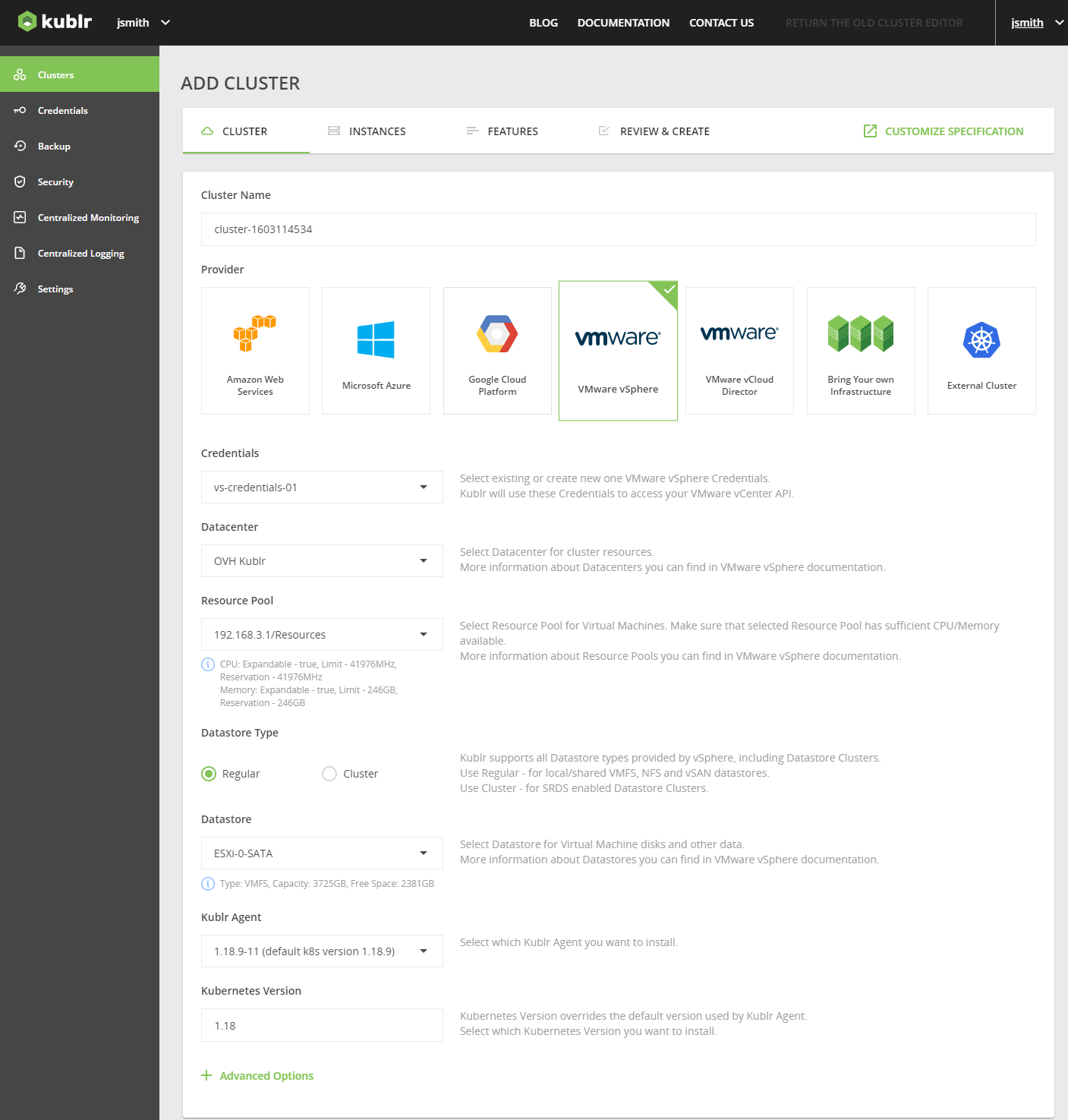
Optionally, set Advanced Options.
Scroll to the Network Configuration section.
Set:
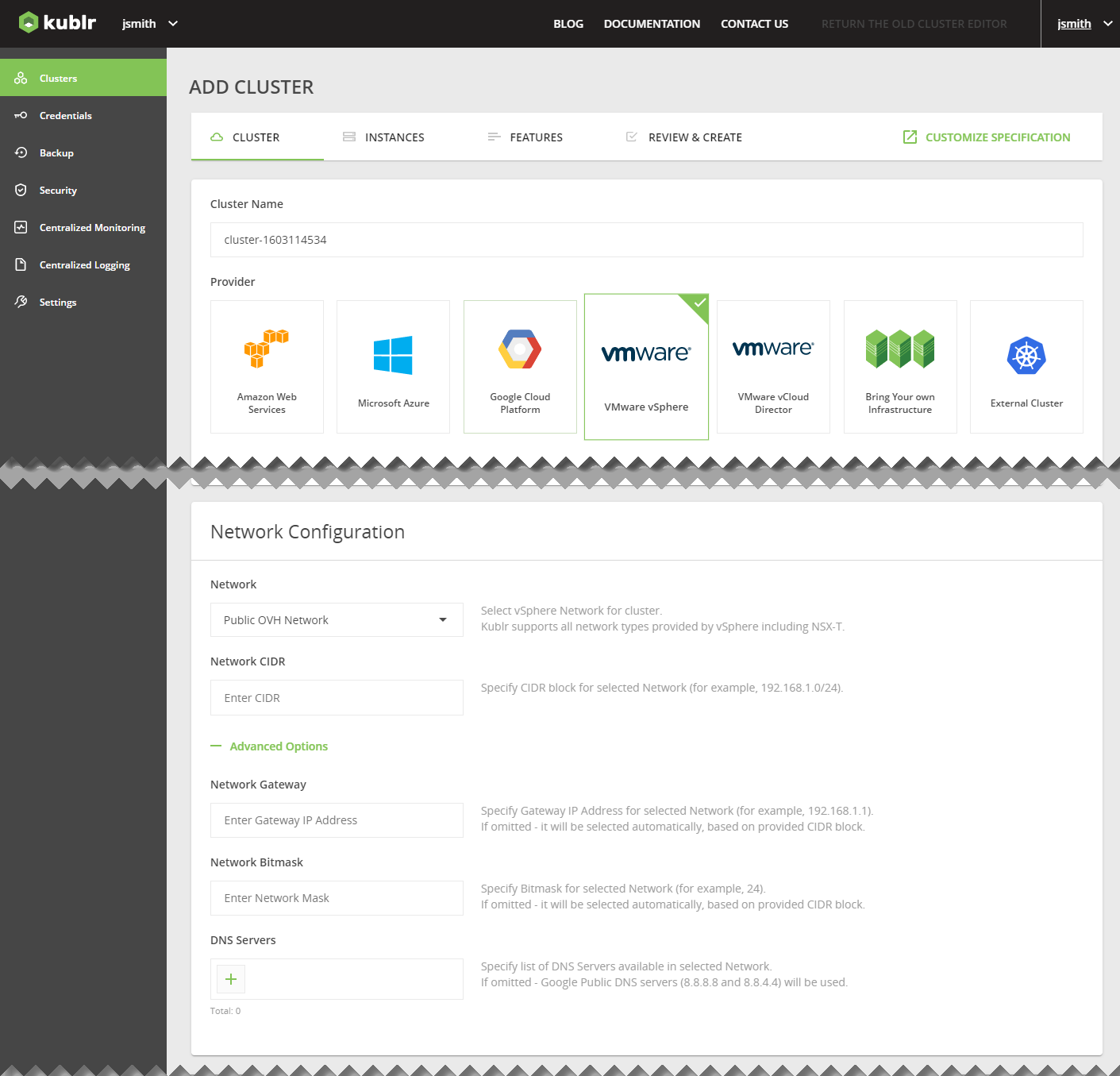
Optionally, set Advanced Options.
Use the INSTANCES tab.
Use the Master Configuration section.
Specify the parameters of the master node(s) of your cluster as described below.
From the Masters list, select the number of master nodes.
Set Master X: IP for each node.
For 3 and 5 master nodes configuration, optionally specify Load Balancer Address.
Select from lists:
Set:

Optionally, set Advanced Options.
Scroll to the instance group section (default name group1).
Specify the parameters of the worker node(s) in your group as described below.
Select IP Address Allocation Mode.
Enter number of Nodes to be provisioned in the node group.
Select from lists:
Set:
If necessary, set your own name for the instance group.
Note For your working nodes, you can have as many instance groups as you need (clone or delete the current instance group, or add another one). If necessary, give specific name to each group.

Optionally, set Advanced Options.
Use the FEATURES tab to select and configure FEATURES that you want to include into your cluster.
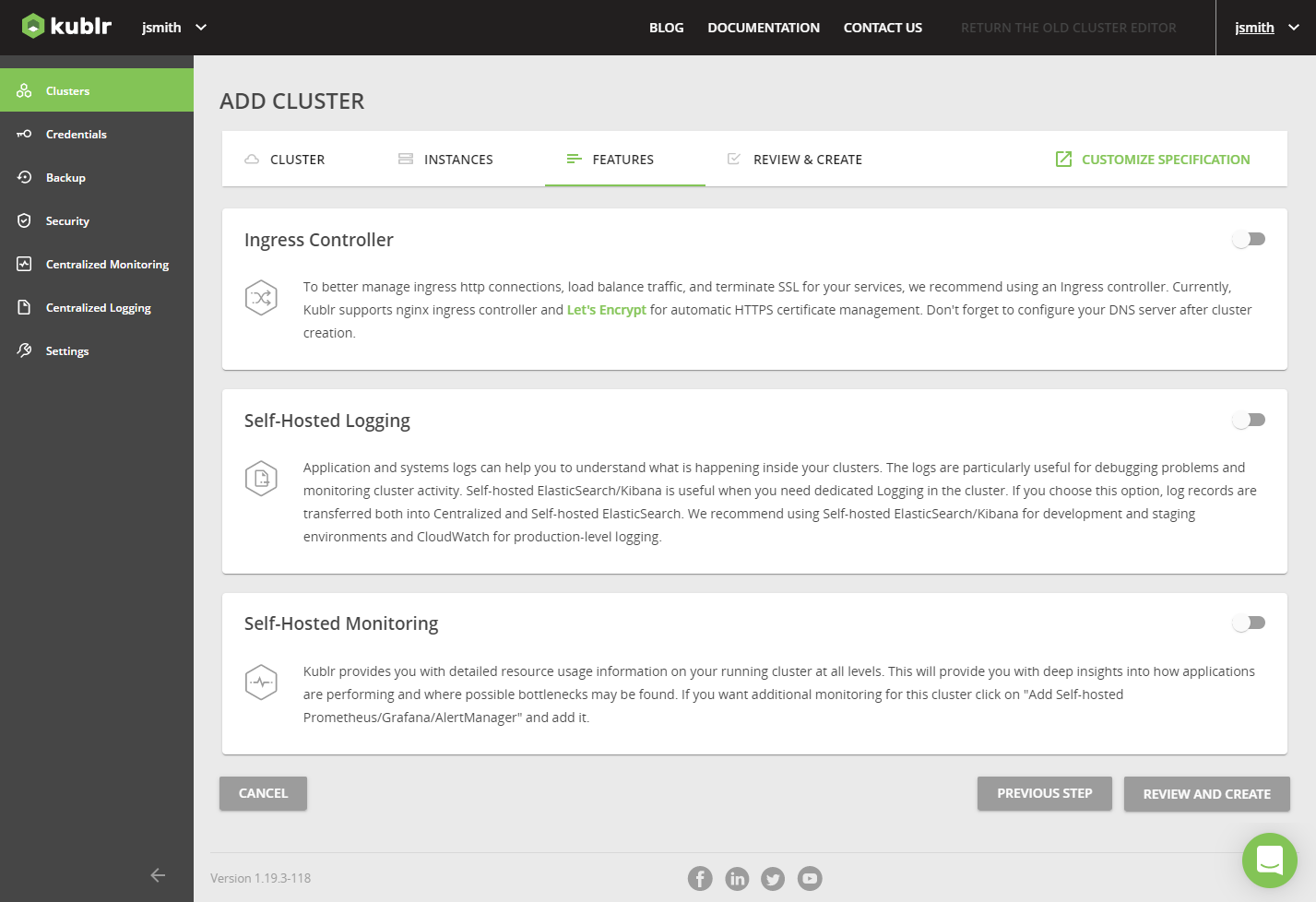
Click the REVIEW & CREATE step.
Review your cluster parameters.
At the bottom of the dialog, click CONFIRM AND INSTALL.
A notification is displayed “Your cluster is being created. It might take a few minutes.”
In the notification window, click OK.
Your new cluster page is displayed on the Events tab showing the cluster creation progress.